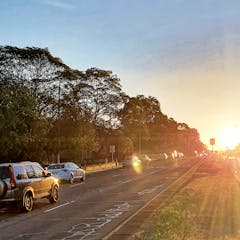
Articles on Town planning
Displaying 1 - 20 of 78 articles

Current construction approaches are too slow to achieve the ambitious national housing target. But there’s a proven alternative building technology that’s more efficient, faster and greener.

Even a small rise in sea level can have big impacts on coastal properties, so we must do all we can to limit the changes while taking them into account in coastal land-use planning.

Bypassing planning regulations is likely to have impacts on social inequity and wellbeing that could prove very costly for both governments and people.

It’s about designing cities that prioritise people not cars.

Africa’s used vehicle dependency is often attributed to low income and weak regulation.

Local councils are on the front line in a planning system that lacks an up-to-date planning framework to properly assess flood risks and prepare responses.

Lagos, Nigeria’s commercial capital city, is notorious for frequent building collapses. A risk reduction expert offers five recommendations on how to prevent these disasters.

Nigeria’s built environment should ideally be part of a broader, integrated approach to crime prevention and community policing.

Residents and businesses are considering leaving Lismore for good. The town is now on the brink.

How the Israeli authorities are using planning laws to expropriate Palestinian land in East Jerusalem.

For a long time the roof has been an afterthought in urban design, but the future is definitely looking up.

In 1989, Newcastle was hit by Australia’s deadliest earthquake, but high-rise development in the city’s CBD has continued nonetheless. Australia needs a consistent planning code for earthquake risk.

NSW is developing a comprehensive new planning policy with the goal of creating healthy places. A new study finds those people who work as placemakers want these goals embedded in laws and budgets.

Many people prefer the status quo as they struggle to imagine the alternatives. The pandemic has been the catalyst for urban experiments that have opened our eyes to new possibilities.

Urban planning and cultural policies often neglect electronic dance music. Now the pandemic is forcing the EDM world to come up with new strategies to survive.

Valuing children’s views could lead to better urban space for everyone.

The bushfire royal commission handed down its final report last week, but stopped short of recommending a national town planning policy.

Proposals to improve the capital’s urban design and density must also take account of the city’s unique streetscapes.

To achieve sustainable, functional buildings, architects in cities like Lagos need to consider local realities.

When thinking about better uses for temporarily vacant buildings caused by the pandemic, Australia can learn much from the UK.
